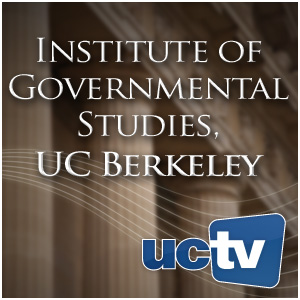53m ·
Published
28 Jun 21:00
Proteins are nature’s machines, performing tasks from transforming sunlight into useable energy to binding oxygen for transport through the body. These functions depend on structural arrangement of atoms within the protein, which was, until recently, only possible to measure statistically, in easily crystallized samples via conventional X-ray diffraction. In the past decade, X-ray Free Electron Lasers (XFELs), a new type of X-ray source, have begun to come online. Using ultra-bright, ultrafast X-ray pulses of the Linac Coherent Light Source (LCLS) at the SLAC National Accelerator Laboratory, this technology allows us to measure not only static pictures of protein structure but to record “molecular movies” of proteins in action. Series: "Lawrence Livermore National Lab Science on Saturday" [Science] [Show ID: 33432]
37m ·
Published
14 Jun 21:00
How often do you wonder about supercomputers and computers that "think" like humans? Supercomputers have been used to model complex scientific phenomena for decades. Now, scientists are entering a new era in computing, and computers are learning in a way that is similar to the human brain. With enough information, computers can learn to solve problems in novel and interesting ways. Specialized computers can even solve these problems using significantly less energy than "classical" computers. This talk describes using supercomputers to solve challenging problems and the evolving technologies of learning systems. Series: "Lawrence Livermore National Lab Science on Saturday" [Science] [Show ID: 33430]
48m ·
Published
07 Jun 21:00
Particle accelerators have been revolutionizing discoveries in science, medicine, industry and national security for over a century. An estimated 30,000 particle accelerators are currently active around the world. In these machines, electromagnetic fields accelerate charged particles, such as electrons, protons, ions or positrons to velocities nearing the speed of light. Although their scientific appeal will remain evident for many decades, one limitation of the current generation of particle accelerators is their tremendous size, typically a mile long, and cost, which often limits access to the broader scientific community. Acceleration of electrons in plasmas, in particular in laser-driven plasmas, has been drawing considerable attention over the past decade. These laser wakefield accelerators promise to dramatically reduces the size of accelerators and revolutionize applications in medicine, industry, and basic sciences. Series: "Lawrence Livermore National Lab Science on Saturday" [Science] [Show ID: 33429]
3m ·
Published
31 May 21:00
Angelique Taylor is a PhD student in the Healthcare Robotics Lab at the Computer Science and Engineering Department at UC San Diego. Angelique completed two Bachelor's degrees in Electrical and Computer Engineering from the University of Missouri-Columbia, where she worked on machine learning research and developed an interest in learning algorithms. Since then, she has become interested in machine learning methods that can be used for interactive agents, leading her to focus on research in human-robot interaction. Working under the direction of Dr. Laurel Riek, her research lies at the intersection of computer vision, robotics, and artificial intelligence. Her work aims to enable robots to interact and work with groups of people in real-world environments. She is a National Science Foundation Graduate Research Fellow, Arthur J. Schmitt Presidential Fellow, GEM Fellow, and Google Anita Borg Memorial Scholar.
Series: "UCTV Prime" [Science] [Show ID: 33425]
11m ·
Published
21 May 21:00
Taught by successful educational entrepreneur and UC San Diego Computer Science and Engineering Alumna Sarah Guthals, an innovative new course for computer science students builds the skills necessary to communicate their field to others through the experience of teaching K-12 students the fundamentals of coding in extracurricular settings in schools and libraries. Series: "UCTV Prime" [Science] [Show ID: 33135]
19m ·
Published
10 May 21:00
Hunting is considered a key human adaptation and is thought to have influenced our anatomy, physiology and behavior over time. This symposium explores the evidence pertaining to the origins of hominin hunting. Evidence for meat eating in the form of butchery marks on animal bones made by hominins dates back to at least 2.6 million years ago. Perhaps they didn’t hunt them, but instead scavenged the leftovers from carnivore kills. Briana Pobiner, Goerge Washington University. Series: "CARTA - Center for Academic Research and Training in Anthropogeny" [Humanities] [Science] [Show ID: 33576]
18m ·
Published
08 May 21:00
Hunting is considered a key human adaptation and is thought to have influenced our anatomy, physiology and behavior over time. This symposium explores the evidence pertaining to the origins of hominin hunting. The idea that women have evolved to be plant gatherers and men hunters has dominated evolutionary thinking and the popular imagination for decades. Australia is one of the places that challenges our understanding of who hunts and why. Across Australia prehistorically, women were active hunters, with a primary focus on the hand-capture of small to medium sized animals.
Rebecca Bliege Bird, Pennsylvania State University. Series: "CARTA - Center for Academic Research and Training in Anthropogeny" [Humanities] [Science] [Show ID: 33571]
16m ·
Published
07 May 21:00
Hunting is considered a key human adaptation and is thought to have influenced our anatomy, physiology and behavior over time. This symposium explores the evidence pertaining to the origins of hominin hunting. While the specific role that meat might have played in human evolution remains hotly contested – it certainly changed the playing field for our earliest ancestors. Alyssa Crittenden, UNLV, addresses the nutritional significance of meat and discuss how, during the course of human evolution, red meat has been transformed from a blessing to a potential curse. Series: "CARTA - Center for Academic Research and Training in Anthropogeny" [Humanities] [Science] [Show ID: 33570]




























































































